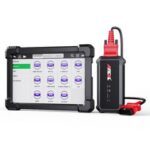For Miata enthusiasts, especially those who push their cars on the track, accurate engine temperature monitoring is crucial. The factory Miata temperature gauge, while functional, is notoriously non-linear, offering a vague indication rather than precise temperature values. As one experienced voice noted, simply “linearizing your dash gauge still doesn’t give you REAL temps,” highlighting the need for calibration to understand what the gauge truly indicates.
Fortunately, the Miata community has already done much of the groundwork. Dedicated individuals like Wallyman have created detailed guides for calibrating the temperature gauge in various Miata models, spanning from 1990 through 2005. These guides even break down calibrations by gauge types (1990-93, 1994-97, and 1999-2005), providing specific resistor recommendations to achieve desired displayed temperature ranges. Owners can choose sweeps like 120f-270f, 150f-270f, 170f-270f, or 170f-250f, tailoring the gauge to their specific needs and preferences. These guides also include helpful photos illustrating needle positions at 10-degree Fahrenheit increments within each range, making the calibration process more visual and user-friendly. While adding numerical markings to the gauge face for finer detail can be challenging due to limited space, the core linearization provides a significant improvement in temperature interpretation.
The image above clearly illustrates the benefit of linearization, comparing the stock gauge sweep to a linearized one. This visual representation emphasizes how a calibrated gauge offers a far more informative temperature display compared to the original, vague sweep.
This relatively inexpensive modification provides a more accurate and understandable temperature reading. For track addicts and performance-focused Miata owners utilizing OBD2 apps, this linearized gauge becomes even more valuable. While the gauge provides at-a-glance information, OBD2 applications can offer alarms for critical temperature thresholds and display a wealth of additional data beyond temperature, such as voltage and ambient air temperature – parameters the stock Miata gauges simply don’t monitor. By combining a linearized gauge with OBD2 monitoring, Miata drivers gain a comprehensive and precise view of their engine’s health, crucial for both spirited driving and track day performance.

